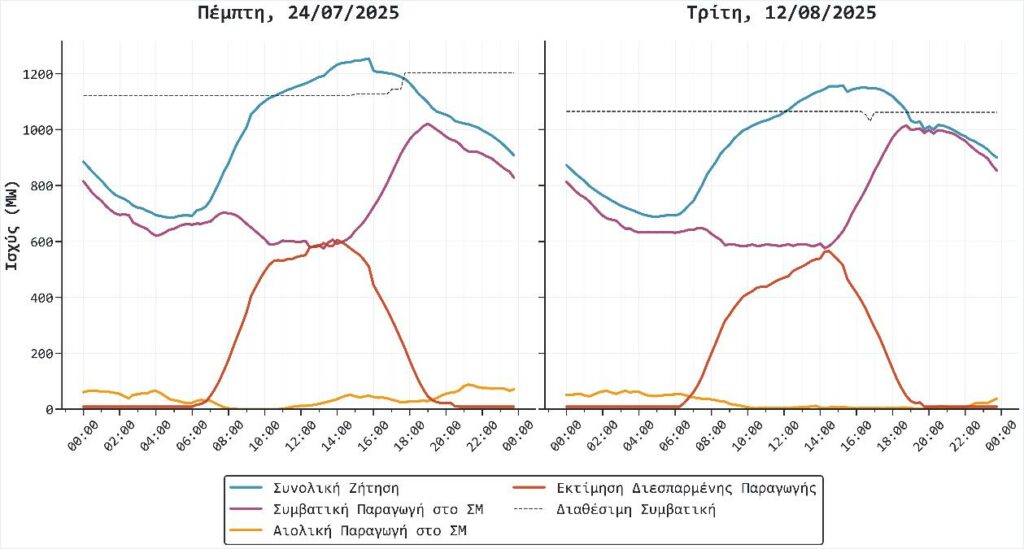Filenews 18 August 2025
Dr. Andreas Prokopiou
Former Senior Researcher in the field of Smart Grids, University of Melbourne and researcher at Électricité de France R&D in France
In recent days, there has been a lot of talk about the insufficiency of production in Cyprus. The discussions culminated after the rotating consumer load outages of August 12, 2025, with the reasonable question of whether our electricity system can actually meet the needs of demand.
There is no question that production capacity must be strengthened and that a serious debate is needed on how this is to be achieved. In the energy sector, different approaches are being put forward: from new conventional plants to storage and intelligent demand management. However, what is worrying is that August 12 itself, a day that brought interruptions in consumer loads, should not be counted among the days of insufficiency.
On the contrary, historical data shows that in previous summers we experienced much more difficult days, with higher demand and more demanding load profiles, without any need for consumer load interruptions.
The comparison of days
Looking at the historical data of the TSO, we see that:
- On July 24, 2025 (Figure 1), just three weeks before the consumer load outages, total demand peaked at 1,233 MW. In the critical period 18:30–22:00, peak demand was 1,127 MW, with 1,204 MW of available conventional capacity. The system responded normally.
- On August 12, 2025 (Figure 1), total demand was lower, peaking at 1,158 MW. However, in the same afternoon the peak reached 1,087 MW, with the available conventional power limited to only 1,062 MW. This small delay was enough to cause alternating interruptions.
Figure 1 – Comparison 24/07/2025 to 12/08/2025

If we look at the previous summers, the contrast becomes even more pronounced:
- On July 22, 2024, the afternoon peak reached 1,162 MW, with available capacity of 1,150 MW despite the marginal margin, the system met the needs.
- On July 24, 2023, the afternoon peak reached 1,114 MW, with available conventional capacity of 1,271 MW, sufficiency was fully assured.
The essence of the problem: an inadequacy that should not exist
August 12, 2025 was not a day of extreme demand, it was a day of reduced production availability. While on the difficult days of 2023 and 2024 the maximum technically possible capacity was 1,270–1,330 MW, on 12 August 2025 it was limited to only 1,065 MW. This divergence was enough to, despite lower demand, turn a "manageable" day into a day of scarcity.
This reduced availability can be attributed either to technical failures or to planned maintenance, without it being entirely clear which of the two prevailed. Whatever the cause, the message is the same: the adequacy of the system cannot depend on circumstances or random events. It needs systematic planning, and reliable planning.
The 12th of August is not just a date of interruption of consumer load, it is a resounding reminder that the real issue for our electricity system is not only to meet demand, but above all to ensure the availability and reliability of production. Strengthening adequacy is not a theoretical discussion, but an immediate priority, so that we do not have to relive the phenomenon of a "day of inadequacy that should not".
The views expressed are personal.
